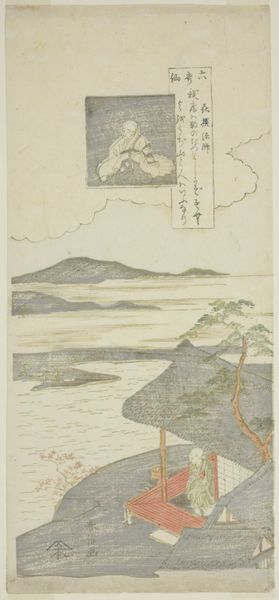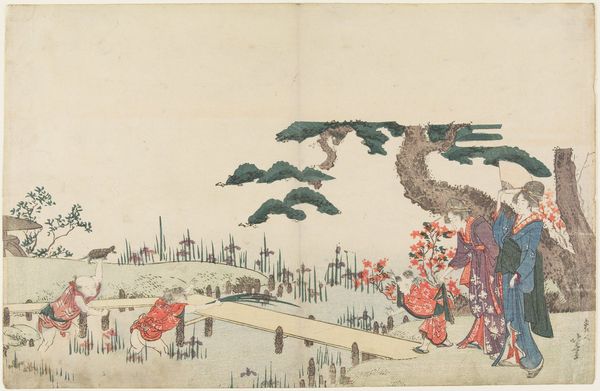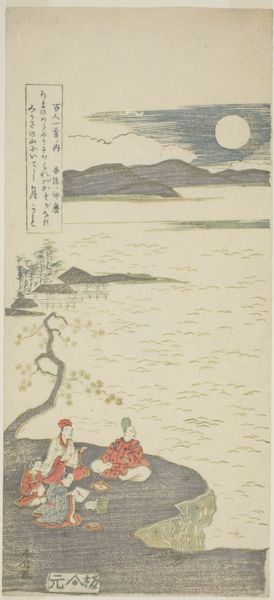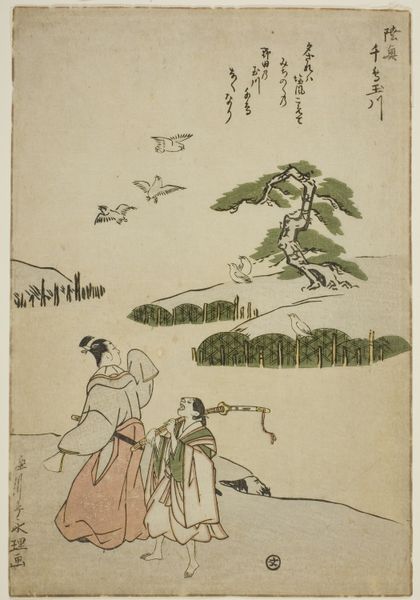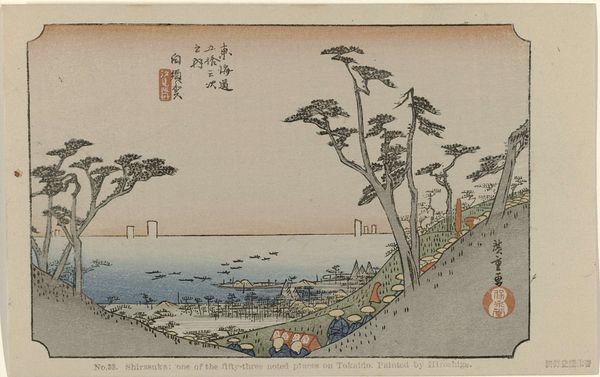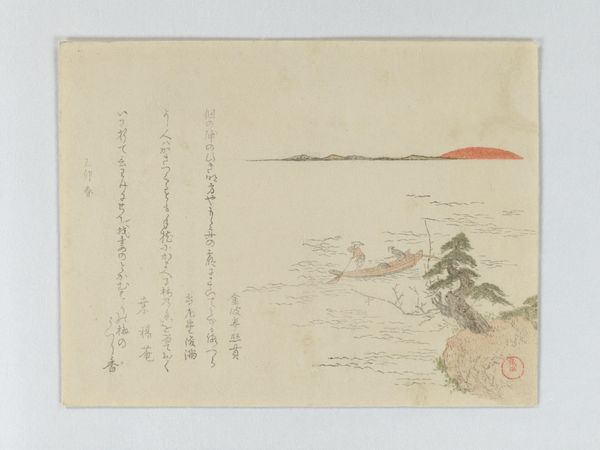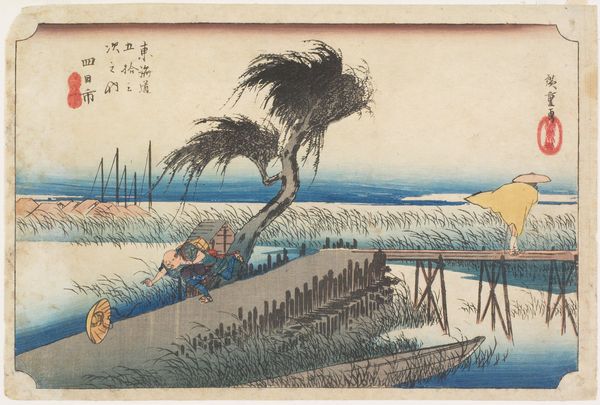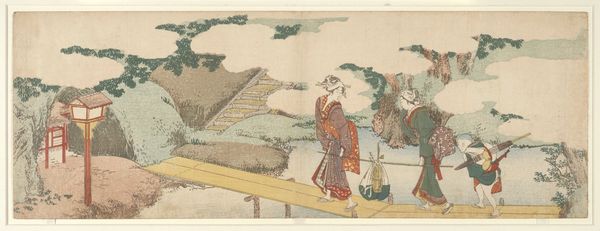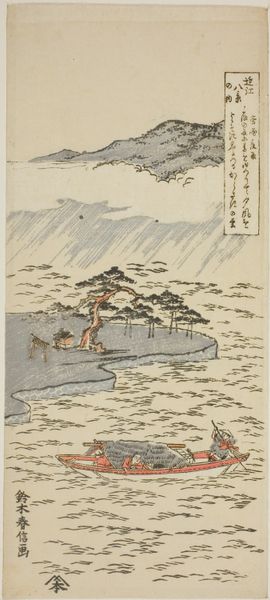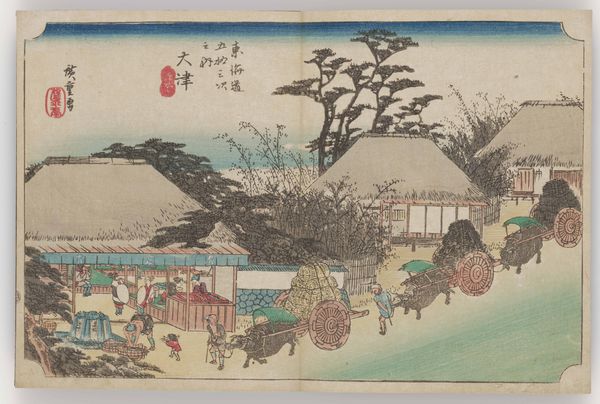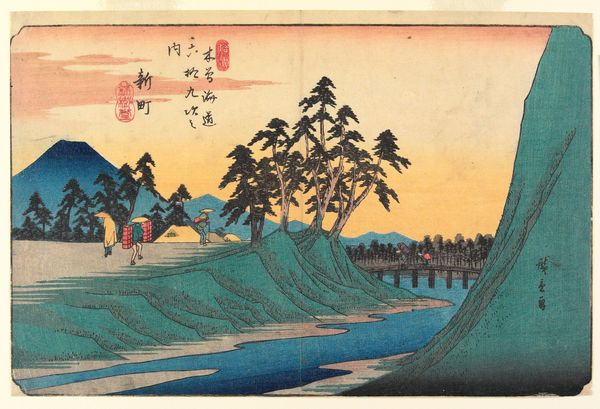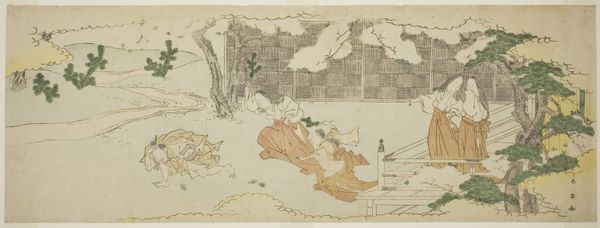
Dimensions: 9 15/16 x 14 1/2 in. (25.2 x 36.8 cm)
Copyright: Public Domain
Editor: Here we have Ryūryūkyo Shinsai’s "Clear Weather after a storm at Awazu", made sometime between 1810 and 1830. It's a color woodblock print, and I’m struck by the scene's tranquility, and also by how tactile everything feels, like I could reach out and touch the stones of the building. What catches your eye? Curator: I think you’re right to focus on the materiality here. The printmaking process itself, the labour involved in carving those woodblocks, and the very availability of paper and pigments at the time tells a rich story. Notice the flat perspective, characteristic of Ukiyo-e prints, which served a booming merchant class in Edo period Japan, mass producing images for popular consumption. This wasn’t necessarily “high art”, right? More of a commodity. Editor: So you’re saying its value is tied to its production and how it was distributed to people, not just aesthetics? Curator: Exactly. Consider the social context: Who could afford these prints? What stories did they tell about daily life and the landscape? The labor of the artist is intertwined with broader economic forces at play. The medium of the woodblock is key; mass production allowed wider circulation of art for enjoyment and cultural impact. How does knowing this shift your perception of the work? Editor: It makes me consider who was viewing this and what kind of lives they led. Thinking about it as a commercial object changes the tone for me, almost demystifying it. Thanks for expanding my view of its materiality! Curator: It makes you appreciate the complex interplay between art, labour and its audience, doesn't it? Examining these Ukiyo-e prints through a materialist lens truly allows us to see past pure aesthetics, highlighting the object's role in society and cultural consumption at large.
Comments
No comments
Be the first to comment and join the conversation on the ultimate creative platform.
